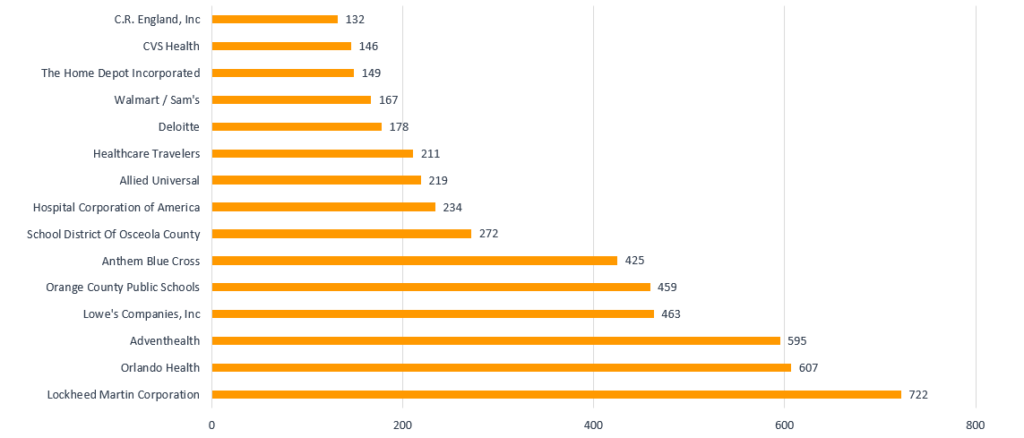A weekly update to high-frequency indicators through July 30 that will signal worsening or better economic recovery outcomes for the Orlando region.
In this weekly, special edition of the metro Orlando Market Overview, the Partnership research team analyzes select, high-frequency indicators* that will signal worsening or better outcomes for the region. The signs of a deepening recession or the beginning of a recovery will appear in these indicators before they are seen in a wider set of data sources.
Of note, the National Bureau of Economic Research officially declared the US economy in a recession on Monday, June 8. Starting in February, this recession ends a decade-long period of economic expansion and the longest in recorded US history.
The metrics provided below will be updated in new posts on a weekly basis by the research team with the latest data available.
*Lags in data collection and publishing mean that many economic indicators will not begin to quantify the effects of a COVID-19 recession on the Orlando region until Q3 2020 and beyond.
| Unemployment Rate | New Claims for Unemployment Insurance | Month to Month Job Change | Week to Week Job Postings | |
| Metric | 16.5% | 9,006 | 30,700 | 5,925 |
| Rate of Change | -4.6pp MoM | -12.2% WoW | +2.8% MoM -12.9% YoY | -1.3% WoW |
| Date Range | June | July 18 | May-June | July 25 |
| Released | Monthly | Weekly | Monthly | Weekly |
Source: U.S. Dept. of Labor, FL DEO, Burning-Glass
Term Definitions:
- MoM = Month-over-month
- YoY = Year-over-year
Key Takeaways: Week of July 30, 2020
- The Orlando unemployment rate fell to 16.5% with the release of June’s data. This was largely due to job gains in restaurants and bars. More than 29,000 jobs were re-gained in the Leisure and Hospitality sector in June and almost every major industry saw gains in employment (slide 10). Only Wholesale trade (-200), Education and Health Services (-900) and Government (-10,700) continued to lose jobs. On net however, Orlando’s employment levels are still down 15% since February.
- June’s numbers do not capture the reclosure of some businesses in July, due to spikes in coronavirus cases. It is likely that the unemployment rate for July increases with another round of job losses. This hypothesis is supported by the increasing number of permanent job losses experienced at the national level. While the overall unemployment rate for the US decreased in June, the number of people reporting that they lost their job permanently (opposed to temporarily) increased to 2.9 million.
- New claims for unemployment insurance saw a decrease in both Florida and the USA. Most recently there was a decrease of new claims to 87.1K in Florida (slide 6). This comes after the number of new claims for Florida doubled two weeks ago. Overall, new claims in the US seems to have leveled out at more than 1 million claims per week. In Florida, weekly data are bouncing along, but have yet to level out within the same time frame. The still high number of claims for unemployment insurance was referenced in National conversations this week as the Bureau of Economic Analysis reported a historic drop in economic activity for Q2 2020 (slide 2).
- Job posting data reflects real-time labor market information and business reopening. In the most recent week, job postings saw no significant change in the number of active posts. Slide 11 shows this information broken out by top industries. Job posting in most top industries remained relatively stable for the week ending July 25. Accommodation and Food Services saw a decline in posts, which was counteracted by a continued increase in jobs post in Healthcare. Note: Job posts do not measure hires and may include companies who continue to post jobs but are on a hiring freeze.
1. Unemployment Rate
2019-2020, NSA
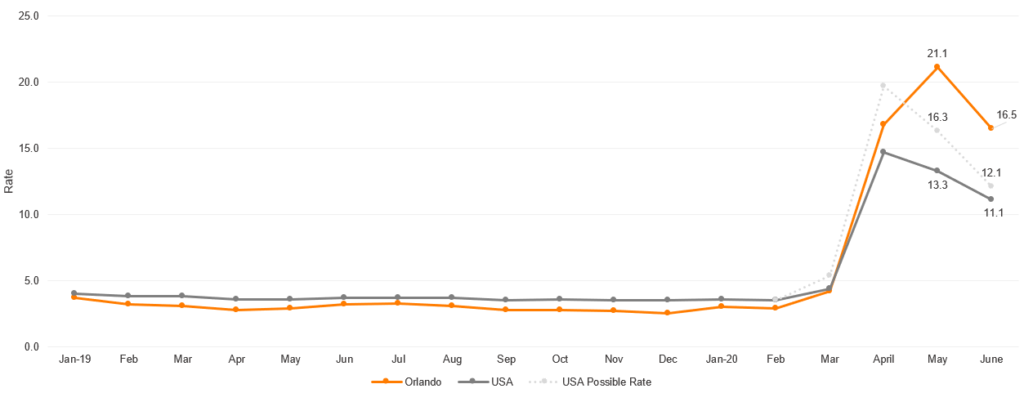
Note: The U.S. unemployment rate for June is 11.1% with the Bureau of Labor Statistics (BLS) suggesting it should be 1 point higher due to a misclassification of “absent” workers. The noted, possible rate from the BLS is included on the gray, dashed line.
2019-2020, NSA by County
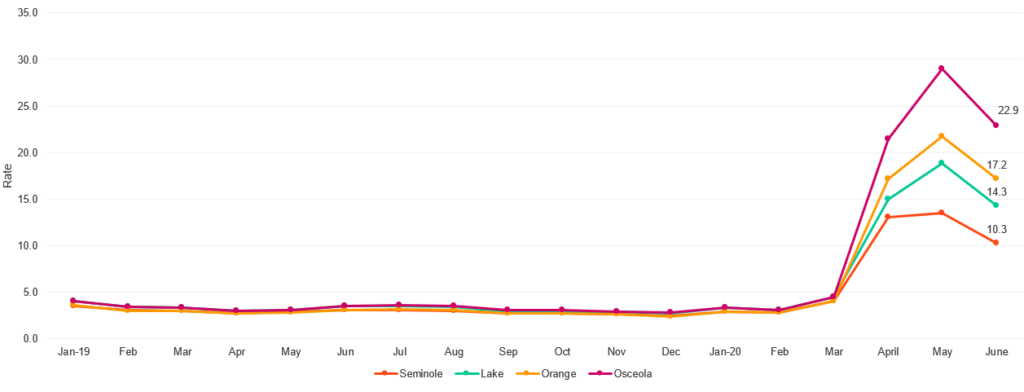
2. New Claims for Unemployment Insurance
U.S., Jan 2020 – July 25, 2020
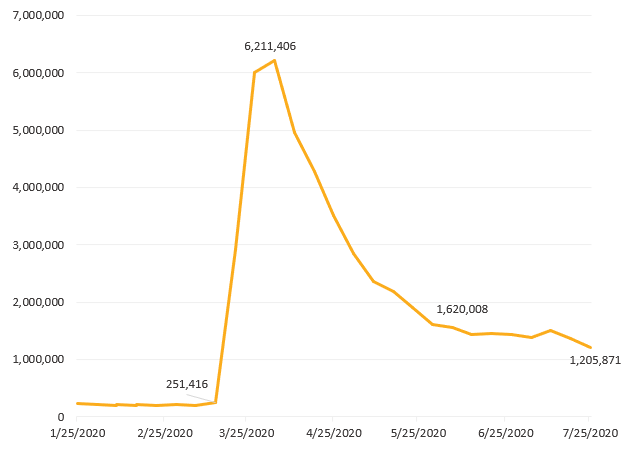
Florida, 2019 – July 25, 2020
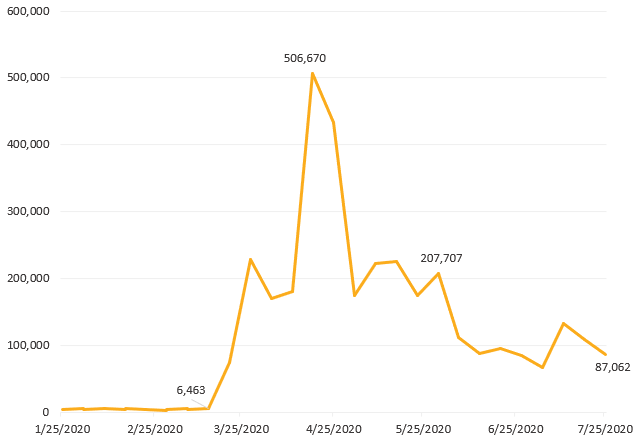
Orlando MSA March 7 – July 18, 2020
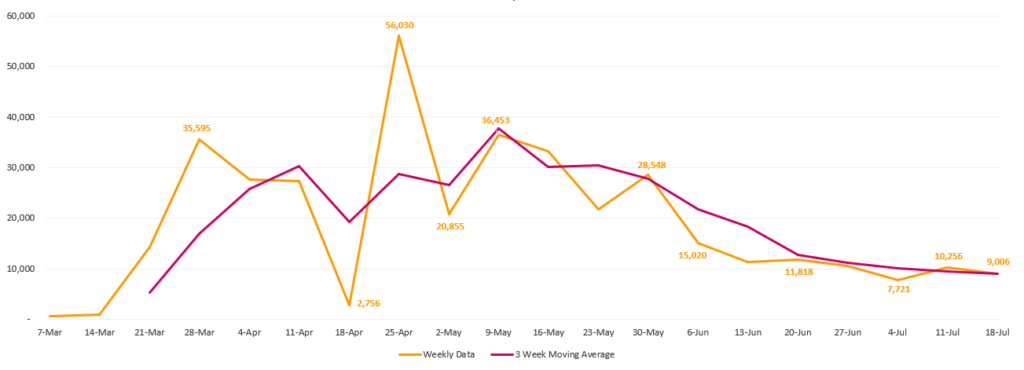
Orlando Counties, March 7 – July 18, 2020
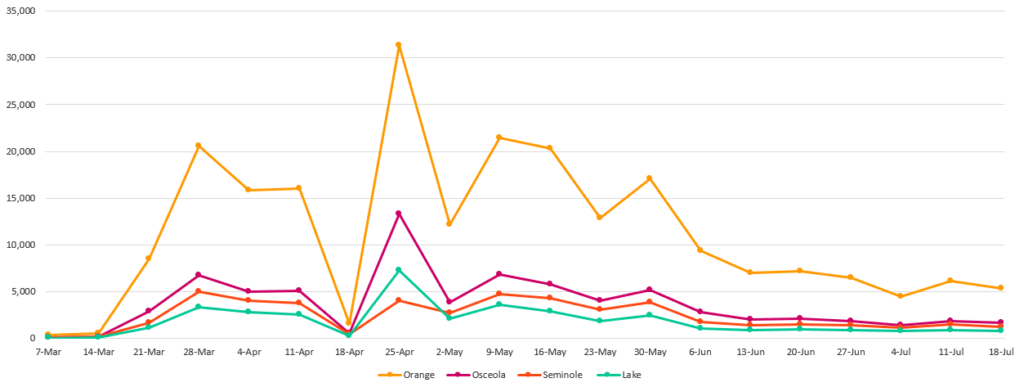
Note: Until recently, the FL Department of Economic Opportunity was publishing unemployment insurance claims data weekly for individual counties. Currently, the most recent data runs through June 27.
3. Month to Month Job Change – By Industry
1-Month Change in Employment May-June 2020 (Not Seasonally Adjusted)
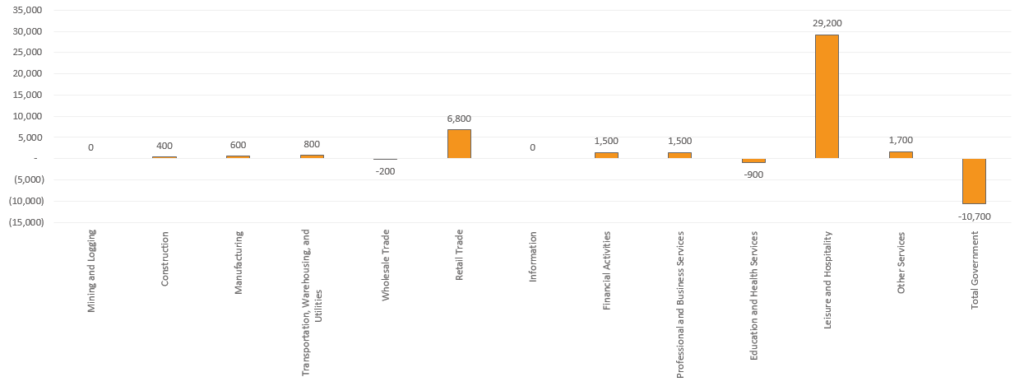
Next Update: July data released August 21
4. Job Postings – Time Series Analysis
Total Online Job Ads, Orlando MSA, by Weekly Posted
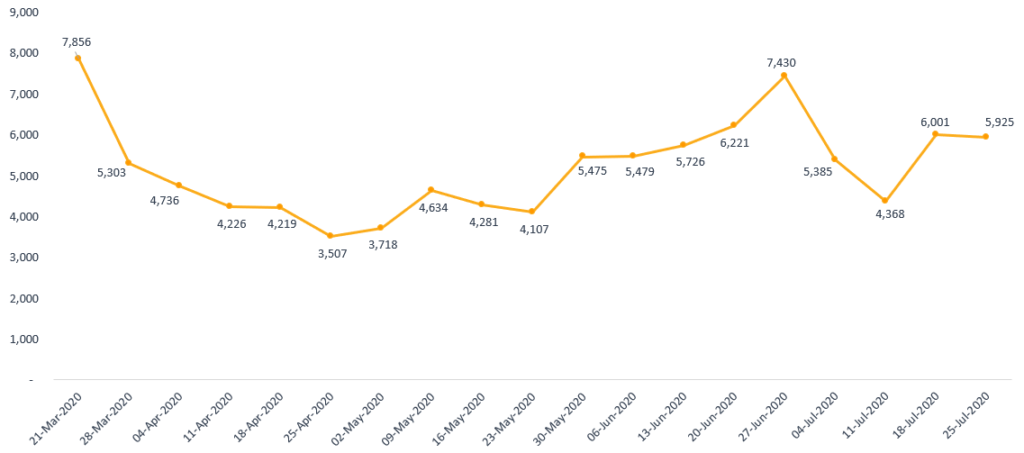
Top 10 Posting Industries: Orlando MSA, by Week Posted
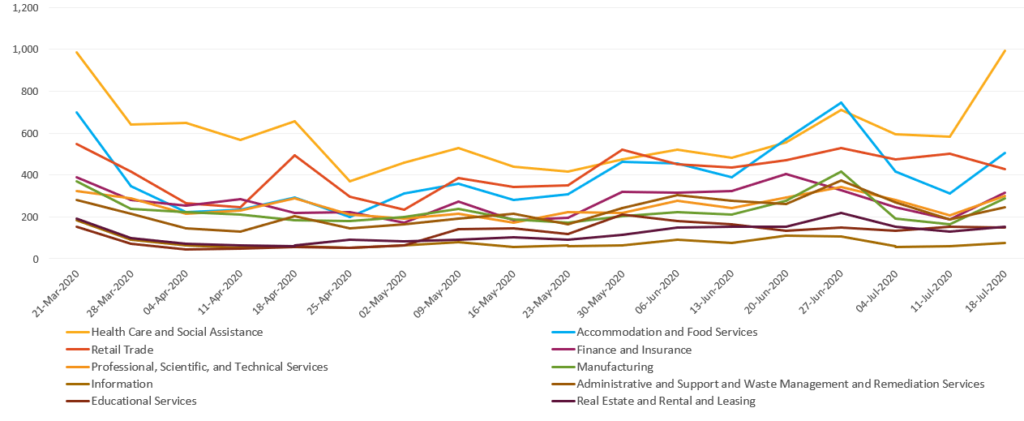
Jobs in Greatest Demand: Orlando MSA, Last 90 Days Ending July 30, 2020
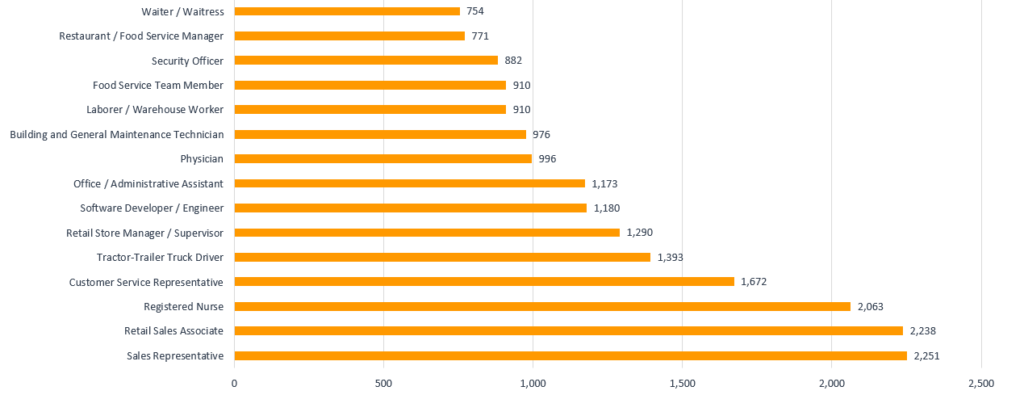
Employers With Most Job Openings: Orlando MSA, Last 90 Days Ending July 30, 2020
